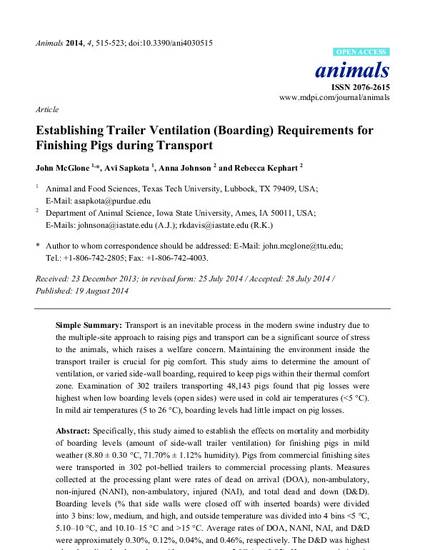
Specifically, this study aimed to establish the effects on mortality and morbidity of boarding levels (amount of side-wall trailer ventilation) for finishing pigs in mild weather (8.80 ± 0.30 °C, 71.70% ± 1.12% humidity). Pigs from commercial finishing sites were transported in 302 pot-bellied trailers to commercial processing plants. Measures collected at the processing plant were rates of dead on arrival (DOA), non-ambulatory, non-injured (NANI), non-ambulatory, injured (NAI), and total dead and down (D&D). Boarding levels (% that side walls were closed off with inserted boards) were divided into 3 bins: low, medium, and high, and outside temperature was divided into 4 bins <5 °C, 5.10–10 °C, and 10.10–15 °C and >15 °C. Average rates of DOA, NANI, NAI, and D&D were approximately 0.30%, 0.12%, 0.04%, and 0.46%, respectively. The D&D was highest when boarding level was low with temperatures <5 °C (p < 0.05). However, variations in boarding level (medium and high boarding) in the temperature range of 5.10 °C to 23.30 °C did not affect pig losses.
Available at: http://works.bepress.com/anna_butters-johnson/57/

This article is from Animals 4 (2014): 515, doi:10.3390/ani4030515. Posted with permission.